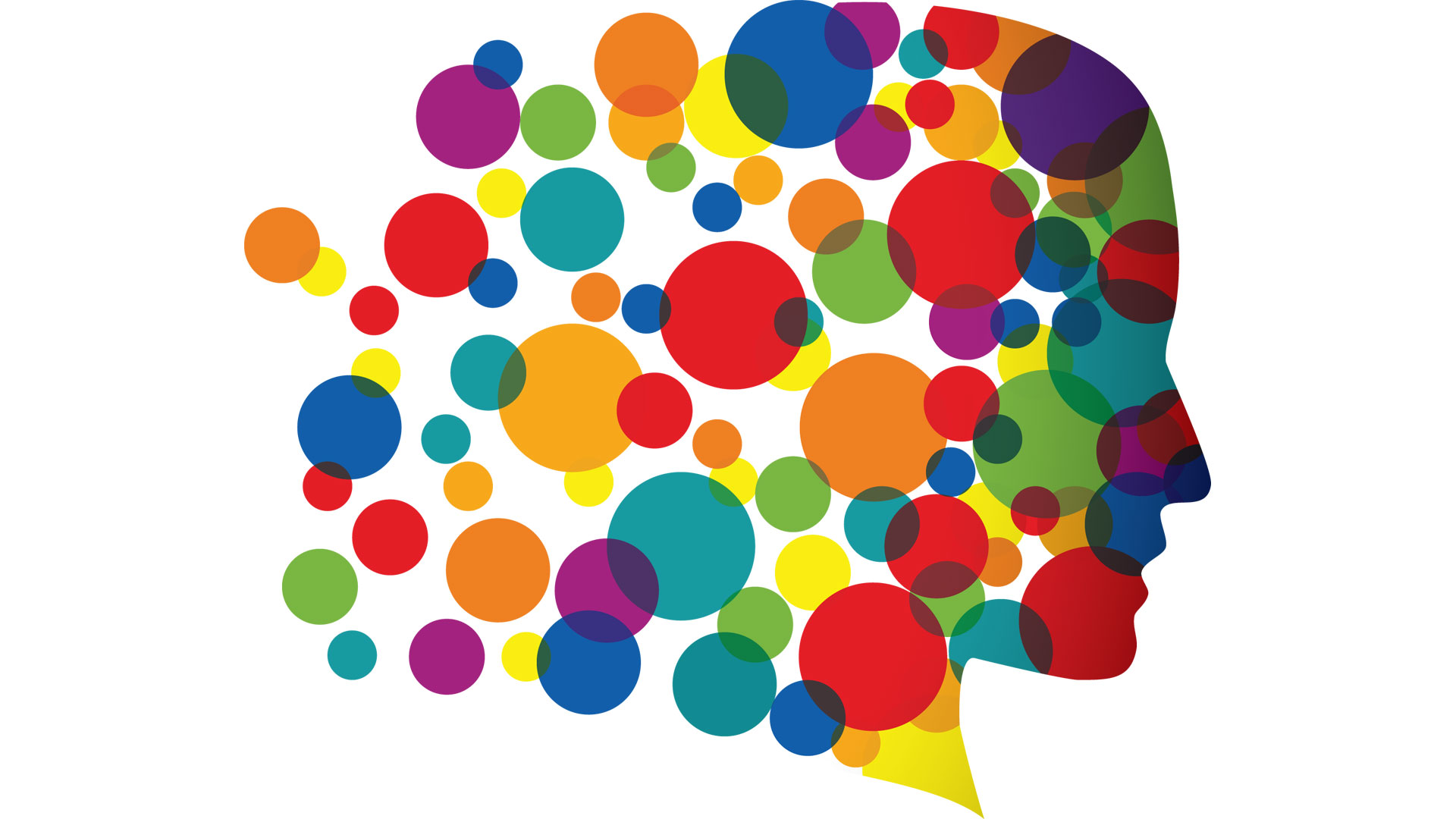Inside Our ADHD Minds: Understanding The Unique Brain

Table of Contents
The Neurobiology of the ADHD Brain
Understanding the ADHD brain requires examining its neurobiological underpinnings. Several key factors contribute to the unique ways individuals with ADHD experience the world.
Neurotransmitter Imbalances
Dopamine and norepinephrine, crucial neurotransmitters, play a significant role in ADHD.
- Dopamine: This neurotransmitter is vital for reward processing and motivation. In ADHD brains, dopamine signaling may be less efficient, leading to difficulties with motivation, reward seeking, and sustained attention. Individuals may struggle to experience the same level of satisfaction from completing tasks, impacting their drive to focus.
- Norepinephrine: This neurotransmitter is essential for alertness and attention. Imbalances can lead to difficulties with sustaining attention, focusing on tasks, and filtering out distractions. This can result in challenges with concentration and staying on track.
- Genetic Factors: Research suggests a strong genetic component to ADHD, influencing the production and functioning of these neurotransmitters. Family history of ADHD significantly increases the risk.
Brain Structure and Function
Neuroimaging studies reveal structural and functional differences in the brains of individuals with ADHD.
- Prefrontal Cortex: This brain region, crucial for executive functions, often shows differences in volume or activity in individuals with ADHD. This can contribute to difficulties with planning, organization, and working memory.
- Basal Ganglia: This area, involved in motor control and habit formation, also demonstrates variations in structure and function. These differences may contribute to impulsivity and hyperactivity symptoms.
- Variations, Not Deficits: It is crucial to emphasize that these are variations in brain structure and function, not necessarily deficits. The ADHD brain operates differently, not necessarily less effectively.
The Impact on Executive Functions
Executive functions, the higher-level cognitive processes that enable us to plan, organize, and regulate our behavior, are significantly impacted in ADHD.
- Working Memory: Difficulties with holding information in mind and manipulating it contribute to problems with following instructions, completing tasks, and remembering appointments.
- Planning and Organization: Challenges in planning and organizing tasks lead to difficulties with time management, procrastination, and completing projects effectively.
- Inhibitory Control: Impairments in inhibitory control result in difficulties with impulse control, interrupting others, and managing emotional responses. This can manifest as blurting out answers, interrupting conversations, or struggling to resist immediate gratification.
Debunking Myths about the ADHD Brain
Many misconceptions surround ADHD, often leading to stigmatization and inadequate support.
ADHD is Not Just "Bad Behavior"
ADHD is not a matter of poor discipline or a lack of willpower. It's a neurological condition with a biological basis.
- Neurological Basis: Symptoms stem from variations in brain structure and function, impacting neurotransmitter systems crucial for attention and self-regulation.
- Involuntary Symptoms: Many ADHD symptoms, like impulsivity or difficulty focusing, are involuntary and challenging to control through sheer willpower.
- Environmental Interactions: While the neurological component is fundamental, environmental factors can significantly influence the expression and severity of ADHD symptoms.
ADHD Presents Differently in Adults and Children
ADHD symptoms evolve over time, presenting differently in adults compared to children.
- Childhood Presentation: Hyperactivity is often more prominent in children, while inattentiveness may be overlooked.
- Adult Presentation: In adults, hyperactivity may be less noticeable, with inattentiveness, difficulty with organization, and emotional dysregulation taking center stage. This can affect relationships, careers, and overall well-being.
- Persistent Challenges: While symptoms change, the core challenges of inattention, impulsivity, and emotional dysregulation often persist into adulthood.
ADHD is a Spectrum
ADHD exists on a spectrum, with symptoms varying widely in type and severity.
- Subtypes: Different subtypes exist, including predominantly inattentive, predominantly hyperactive-impulsive, and combined presentations.
- Symptom Variability: Individuals with ADHD may experience a wide range of symptoms, with some experiencing more pronounced challenges in specific areas.
- Personalized Approach: Accurate diagnosis and tailored treatment plans are essential, accounting for the unique presentation of ADHD in each individual.
Living with an ADHD Brain: Strategies and Support
Living with ADHD requires understanding and employing strategies that leverage strengths and mitigate challenges.
Effective Coping Mechanisms
Various techniques can help manage ADHD symptoms.
- Time Management Tools: Utilizing planners, timers, and digital tools can aid in organization and task completion.
- Mindfulness Practices: Mindfulness techniques can improve focus, emotional regulation, and reduce impulsivity.
- Organizational Strategies: Implementing clear organizational systems for work, home, and personal belongings improves efficiency.
- Medication: Medication can be highly effective for many individuals, regulating neurotransmitter levels and improving focus and impulse control. Always consult with a medical professional before starting any medication.
Seeking Professional Help
Seeking professional guidance is essential for accurate diagnosis and effective management.
- Diagnosis: A thorough evaluation by a healthcare professional is crucial for accurate diagnosis and understanding the specific challenges.
- Treatment Plans: Individualized treatment plans may include medication, therapy, and coaching.
- Support Groups and Resources: Support groups and online resources provide valuable community and information sharing.
Embracing Neurodiversity
Individuals with ADHD often possess unique strengths and perspectives.
- Creativity and Innovation: Many individuals with ADHD exhibit exceptional creativity, innovative thinking, and the ability to think outside the box.
- Intense Focus: When engaged in areas of interest, individuals with ADHD can exhibit remarkable focus and concentration.
- Neurodiversity's Value: Embracing neurodiversity celebrates the contributions and unique talents of individuals with ADHD and other neurological differences.
Conclusion
Understanding the ADHD brain requires acknowledging its unique neurobiology, dispelling myths, and embracing the diversity of experiences. This neurobiological condition impacts executive functions, but it also offers unique strengths. The spectrum of ADHD highlights the crucial need for personalized diagnoses and treatment plans. By understanding the neurological basis of ADHD and employing effective coping mechanisms, individuals can thrive and contribute meaningfully to society. Understanding your ADHD brain is the first step toward effective management and a fulfilling life. Learn more about available resources and support networks today! Search online for "ADHD support," "ADHD understanding," or "ADHD brain" to find helpful information and community.

Featured Posts
-
 Britain And Australias Myanmar Sanctions Purpose And Effectiveness
May 13, 2025
Britain And Australias Myanmar Sanctions Purpose And Effectiveness
May 13, 2025 -
 Springwatch In Japan Experiencing Cherry Blossom Season
May 13, 2025
Springwatch In Japan Experiencing Cherry Blossom Season
May 13, 2025 -
 Nhl Draft Lottery Results Islanders Claim Top Pick
May 13, 2025
Nhl Draft Lottery Results Islanders Claim Top Pick
May 13, 2025 -
 Recent Obituaries Local Residents Who Passed Away
May 13, 2025
Recent Obituaries Local Residents Who Passed Away
May 13, 2025 -
 Texas Mosque Faces Restrictions Impact On New Muslim Community
May 13, 2025
Texas Mosque Faces Restrictions Impact On New Muslim Community
May 13, 2025
Latest Posts
-
 Leonardo Di Caprio The Latest On The Mocking Controversy
May 13, 2025
Leonardo Di Caprio The Latest On The Mocking Controversy
May 13, 2025 -
 Vittoria Ceretti And Leonardo Di Caprio A Met Gala First
May 13, 2025
Vittoria Ceretti And Leonardo Di Caprio A Met Gala First
May 13, 2025 -
 Di Caprios Met Gala 2024 Debut Alongside Vittoria Ceretti
May 13, 2025
Di Caprios Met Gala 2024 Debut Alongside Vittoria Ceretti
May 13, 2025 -
 Is Leonardo Di Caprios Career In Jeopardy After Recent Criticism
May 13, 2025
Is Leonardo Di Caprios Career In Jeopardy After Recent Criticism
May 13, 2025 -
 Leonardo Di Caprio Spy Thriller Streaming Now On Netflix
May 13, 2025
Leonardo Di Caprio Spy Thriller Streaming Now On Netflix
May 13, 2025
